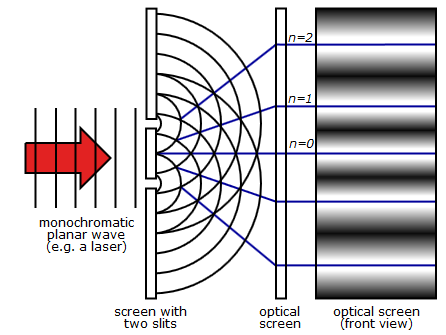Is the universe made of fields or particles?
A few ancient Greek philosophers seriously considered this question and concluded that everything is made of tiny particles moving in empty space. The key 17th-century scientist Isaac Newton agreed, but a century later, Thomas Young’s experiments convinced him and others that light, at least, was a wave, and Michael Faraday and James Maxwell showed that light and other radiations such as infrared and radio are waves in a universal “electromagnetic field.” Such physical fields are conditions of space itself, analogous to the way smokiness can be a condition of the space throughout a room. By 1900, the consensus was that the universe contains two distinct kinds of things: fields, of which electromagnetic radiation is made, and particles, of which material objects are made.
But then Max Planck, Albert Einstein, and others discovered the quantum — arguably the most radical shift in viewpoint since the ancient Greeks gave up mythology for rational understanding. Experiments with light showed radiation is made of microscopic bundles of radiant energy called “photons,” much as matter is made of microscopic bundles called protons, neutrons, electrons, atoms, and molecules. But these bundles turned out to be nothing like tiny particles moving through empty space as Newton and others had supposed. Call them “quanta.” We describe them with quantum physics, and we have good reason to think everything — all radiation and matter — is made of them.
Today we are able to study single individual quanta. At this level, we find matter and radiation to be strangely similar in ways never imagined by pre-quantum physics. Quanta of both matter and radiation turn out to be a sort of compromise between spatially extended fields and tiny isolated particles. A single electron or photon can, for example, be in two widely separated (even by many kilometers) places simultaneously, or spread continuously across a large distance much as a cloud can fill a large room. But single electrons and photons also demonstrate their particle nature by, for example, interacting with a fluorescent viewing screen in isolated tiny impacts that can be counted.
There are even a few demonstrations of both the particle and field characteristics of quanta in one and the same experiment. The best known is the so-called “double-slit experiment” first used by Thomas Young when he demonstrated light to be a wave. A light beam or electron beam is directed through a pair of narrow slits cut into an opaque screen and allowed to impinge upon a fluorescent screen placed “downstream” from the slits. A broad light-and-dark striped pattern appears on the screen, showing that each beam passed through the slits as waves that then “interfered” with each other the way waves are known to do. But when the beam is dimmed down sufficiently, the electrons and the photons make tiny individual impacts on the screen, impacts that you can count, in the way that particles do.
 Two-Slit Experiment Light by inductiveload. Public domain via Wikimedia Commons.
Two-Slit Experiment Light by inductiveload. Public domain via Wikimedia Commons.The resolution of the field-versus-particles conundrum begins to appear when quanta come through the slits one at a time and we keep track of their impact points. We find that individual impacts fit into the same striped pattern that demonstrated interference, so that the striped interference pattern is formed by many small impacts the way an impressionist-era “pointillist” painting is made by many small dots of paint. This forces us to conclude that each quantum comes through both slits. As the great quantum physicist Paul Dirac put it, “each photon interferes only with itself;” the same is true of each electron.
So each quantum comes through both slits, and approaches the viewing screen in an interference pattern that spreads across the entire screen. Each quantum must embody the entire interference pattern, else how can we explain that each quantum avoids the dark stripes and impacts only the light stripes? Then, when the quantum interacts with the atoms of the screen, it collapses into a much smaller shape, vanishing over the entire screen and showing up at just one location. The details of this “field collapse” are still a subject of discussion among experts.
A quantum that comes through both slits and that embodies an entire spread-out interference pattern is not a particle. These things are waves in a field: the “quantized electromagnetic field” in the case of photons, and the “quantized electron-positron field” in the case of electrons. There are many other arguments for an “all-fields” view of the universe, but the widely-demonstrated double-slit experiment is the most direct demonstration that fields are all there is.
Slam your hand down on a table. The table slams back, as you can tell from your stinging hand. Now look at the microscopic picture: the table and your hand are made of atoms, containing electrons and protons that create electromagnetic fields. Slamming brings your hand’s electrons near the table’s electrons, causing their electromagnetic fields to repel each other. This repulsion stops your hand, and it distorts the molecules (more fields) in your hand, causing nerve cells (more fields) in your arm to transmit a signal (more fields) to your brain. Everything comes down to fields, “conditions of space.”
Featured image: Double slit x-ray simulation monochromatic blue-white by Timm Weitkamp. CC BY 3.0 de via Wikimedia Commons.
The post Is the universe made of fields or particles? appeared first on OUPblog.

Oxford University Press's Blog
- Oxford University Press's profile
- 237 followers



